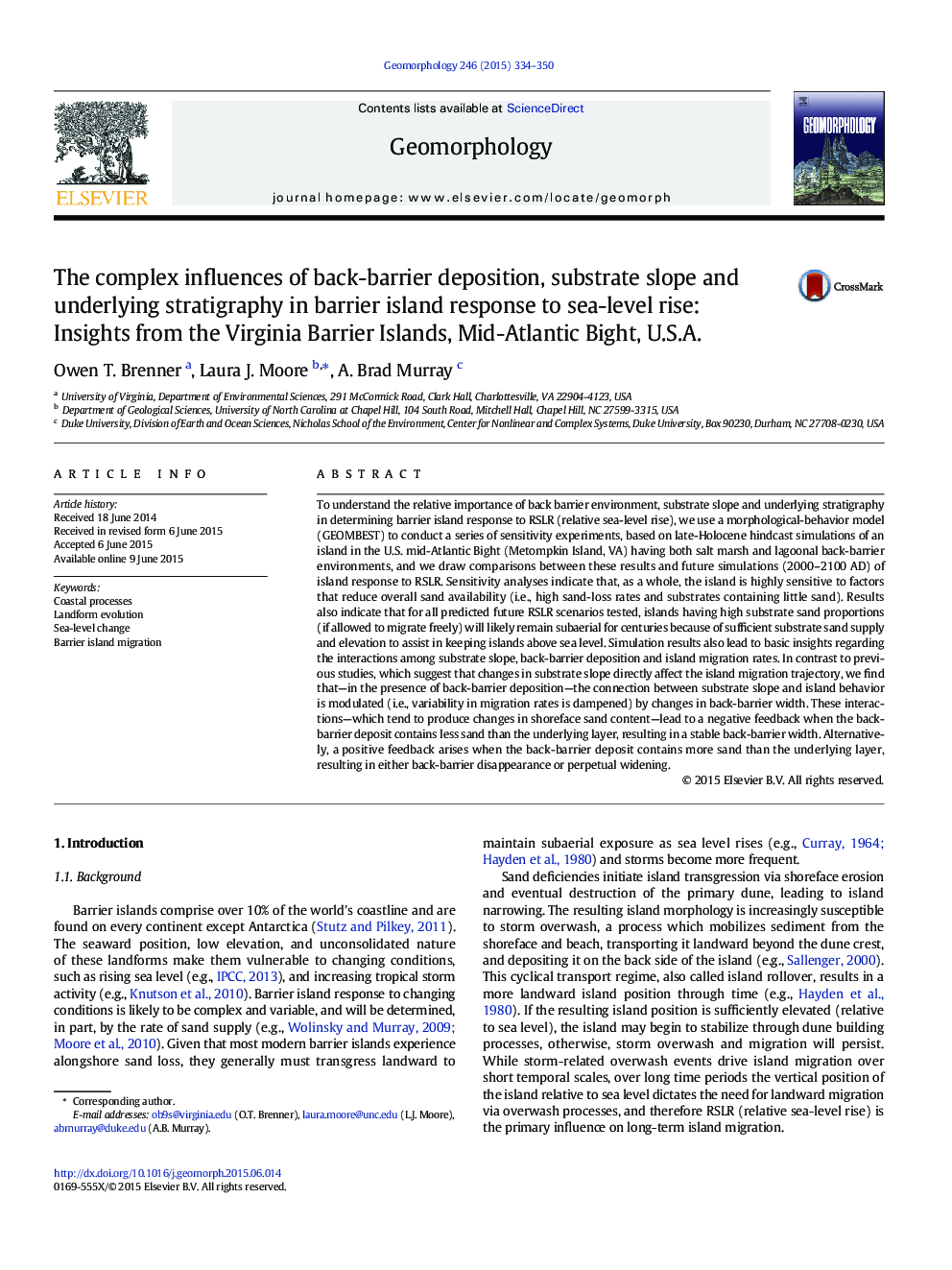| کد مقاله | کد نشریه | سال انتشار | مقاله انگلیسی | نسخه تمام متن |
|---|---|---|---|---|
| 6431954 | 1635403 | 2015 | 17 صفحه PDF | دانلود رایگان |

- Island evolution is highly sensitive to reduction in overall sand availability.
- Back-barriers dampen effect of changes in substrate slope on island migration.
- Changes in back-barrier width may alter shoreface sand content leading to feedbacks.
- Feedbacks can lead to either stable back-barrier widths or runway growth/loss.
To understand the relative importance of back barrier environment, substrate slope and underlying stratigraphy in determining barrier island response to RSLR (relative sea-level rise), we use a morphological-behavior model (GEOMBEST) to conduct a series of sensitivity experiments, based on late-Holocene hindcast simulations of an island in the U.S. mid-Atlantic Bight (Metompkin Island, VA) having both salt marsh and lagoonal back-barrier environments, and we draw comparisons between these results and future simulations (2000-2100Â AD) of island response to RSLR. Sensitivity analyses indicate that, as a whole, the island is highly sensitive to factors that reduce overall sand availability (i.e., high sand-loss rates and substrates containing little sand). Results also indicate that for all predicted future RSLR scenarios tested, islands having high substrate sand proportions (if allowed to migrate freely) will likely remain subaerial for centuries because of sufficient substrate sand supply and elevation to assist in keeping islands above sea level. Simulation results also lead to basic insights regarding the interactions among substrate slope, back-barrier deposition and island migration rates. In contrast to previous studies, which suggest that changes in substrate slope directly affect the island migration trajectory, we find that-in the presence of back-barrier deposition-the connection between substrate slope and island behavior is modulated (i.e., variability in migration rates is dampened) by changes in back-barrier width. These interactions-which tend to produce changes in shoreface sand content-lead to a negative feedback when the back-barrier deposit contains less sand than the underlying layer, resulting in a stable back-barrier width. Alternatively, a positive feedback arises when the back-barrier deposit contains more sand than the underlying layer, resulting in either back-barrier disappearance or perpetual widening.
Journal: Geomorphology - Volume 246, 1 October 2015, Pages 334-350